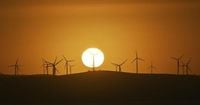Australia, long recognized as one of the world’s highest per capita greenhouse gas emitters, has announced an ambitious new target to slash its emissions by between 62% and 70% below 2005 levels by 2035. The announcement, made on Thursday, September 18, 2025, by Prime Minister Anthony Albanese, marks a decisive moment in the nation’s climate policy and sets the stage for heated political debate as the government prepares to present the new target at the United Nations General Assembly in New York later this month.
This fresh target builds on Australia’s existing commitment to a 43% emissions reduction by 2030 and the long-term goal of achieving net-zero emissions by 2050. According to AP, Albanese described the new benchmark as “a responsible target backed by the science, backed by a practical plan to get there and built on proven technology.” He added, “It’s the right target to protect our environment, to protect and advance our economy and jobs and to ensure that we act in our national interest and in the interest of this and future generations.”
The move comes at a time when the country is under increasing pressure, both at home and abroad, to step up its climate action. Australia, which has faced global criticism for its continued reliance on coal and liquefied natural gas (LNG) exports, is aligning its new target with recommendations from the government’s independent Climate Change Authority. The Authority had advised a reduction range of 62% to 70% below 2005 levels, a range which Albanese emphasized is “consistent with the European Union considering for themselves a reduction target range of between 63% and 70% below 1990 levels.”
Matt Kean, chair of the Climate Change Authority, underscored the significance of the announcement, telling reporters that Australia’s 2035 target demonstrates “higher ambition than most other advanced economies.” The Paris Agreement, signed in 2015, obligates signatories to regularly increase their emissions reduction commitments, and this latest move is part of Australia’s effort to meet that responsibility.
Yet, the new target has not satisfied everyone. Environmental groups had been pushing for a reduction exceeding 70%, arguing that anything less would fall short of what’s needed to prevent the most catastrophic impacts of climate change. According to the BBC, Australia has already experienced an increasing number of climate-related weather extremes, including severe drought, historic bushfires, and record-breaking floods in recent years. Warmer seas have also led to mass coral bleaching at the iconic Great Barrier Reef and the Ningaloo Reef.
Just days before the announcement, a landmark government-commissioned risk assessment warned that Australia faces a future of increasingly extreme weather due to man-made climate change. The report found the country has already warmed more than 1.5°C above pre-industrial levels, with no community immune from “cascading, compounding and concurrent” climate risks. The study warned of more heatwave-related deaths, poorer water quality from severe flooding and bushfires, and sea level rise that could threaten 1.5 million Australians. The economic toll could be staggering, with property values projected to drop by A$611 billion (about $406 billion USD) if stronger action isn’t taken.
Despite the urgency, the path forward remains politically fraught. The conservative opposition Liberal Party, which has lost the last two federal elections, is now debating whether to abandon its commitment to net-zero emissions by 2050—the only climate target it currently supports. Opposition leader Sussan Ley was quick to dismiss the new 2035 target, declaring, “These targets cannot be met. They are fantasy: we know, Australians know, and they’re very disappointed in this prime minister.” Ley also argued that the plan failed on both “cost and credibility.”
The government, for its part, maintains that Australia is on track to narrowly achieve its 2030 target. Since coming to power in 2022, Albanese’s Labor government has raised climate ambitions, increasing the previous conservative coalition’s reduction target of 26-28%. However, critics say the government’s approach is undermined by its continued approval of major fossil fuel projects. Just last week, the Woodside North West Shelf gas project—one of the nation’s largest—was granted approval to operate for another 40 years, until 2070, a decision that drew sharp criticism from environmentalists and climate advocates.
Senator Larissa Waters, a prominent leader of the Australian Greens, minced no words in her response. She called the government’s actual target of 62% “appallingly low” and accused Labor of “selling out to the coal and gas corporations with this utter failure of a climate target.” Waters went further, labeling the extension of the gas project a “betrayal” by Labor, and criticized the government for not addressing Australia’s status as one of the world’s largest exporters of coal and LNG.
Business groups, meanwhile, have voiced concerns about the economic impact of more aggressive emissions cuts. The Australian Chamber of Commerce and Industry’s chief executive, Andrew McKellar, described the 2035 goal as “ambitious.” He pointed out, “One of the biggest issues that industry faces at the moment is the costs that we incur in terms of energy. We’ve got to have a sustainable pathway forward. We’ve got to have energy security and we’ve got to have energy affordability as well.” Business leaders have warned that cuts above 70% could put billions of dollars in exports at risk and force companies to move operations offshore.
Within this contentious landscape, the government has sought to chart a middle course—one that aims to satisfy international expectations and domestic economic realities. Albanese has repeatedly framed the new target as a balance between environmental responsibility and economic pragmatism, insisting that the plan is both achievable and necessary for Australia’s future prosperity. He’s also keen to position Australia as a future “renewable energy superpower,” even as critics highlight the ongoing approvals of fossil fuel projects.
As the prime minister prepares to present the 2035 target to the United Nations, all eyes will be on whether Australia can deliver on its promises. The nation’s climate agenda remains deeply divisive, with the opposition Liberal National coalition locked in internal debate over the future of net-zero, and independent and Greens MPs pushing for even faster, deeper cuts. Meanwhile, the public—having endured years of climate-driven disasters—will be watching closely to see if words are matched by action.
With the stakes so high, the coming months could prove pivotal for Australia’s climate future, as the nation weighs competing demands from environmentalists, industry, and a wary electorate. The new target sets the bar higher than ever before, but whether the country can clear it remains to be seen.


